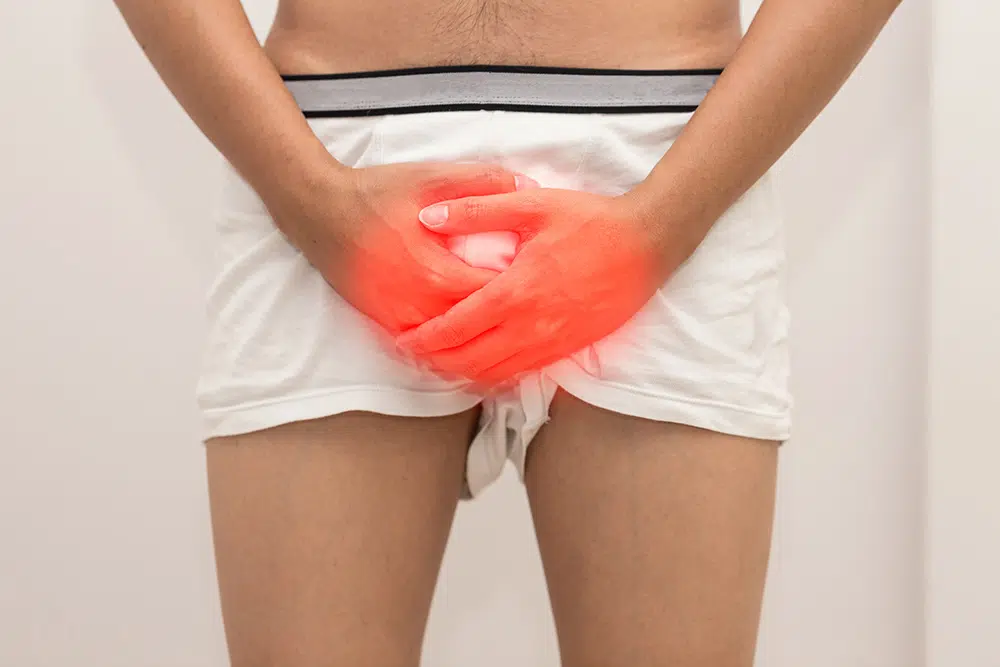Table of Contents
ToggleAll You Need to Know About Common and Rare Vasectomy Side Effects
A vasectomy is the most reliable form of permanent contraception for men. It is a quick procedure, and for most, recovery is straightforward. Like any medical procedure, however, there may be some side effects. Understanding what is common, what is less frequent and what requires follow-up care helps men make informed decisions and recover with confidence.
In this latest blog post, we explain the most common vasectomy side effects, how long they usually last and what men can expect both in the short and long term. By knowing what to expect, men can approach the procedure and recovery with clarity and peace of mind.
Understanding Vasectomy and Its Safety Profile
A vasectomy involves blocking the vas deferens to prevent sperm from mixing with semen during ejaculation. At Gentle Procedures, the procedure is performed using a no-scalpel, no-needle technique, which reduces discomfort and speeds up recovery.
Overall, vasectomy is considered a very safe form of male contraception. Complications are uncommon, but being aware of potential side effects before the procedure is an important step. Most men experience only minor, short-lived issues that resolve within a few days to weeks.

Vasectomy side effects are usually mild and short-term, with most men recovering within just a few days.
Common Short-Term Side Effects
The majority of vasectomy side effects appear in the first few days after the procedure. These are usually mild, temporary and manageable with simple care.
Pain or discomfort
Mild soreness or aching in the scrotum is very common and typically lasts a few days. Most men describe it as a dull ache rather than sharp pain. Over-the-counter pain relief and rest are usually sufficient, and discomfort often eases within the first week.
Swelling and bruising
Swelling and bruising around the scrotum are expected as the body heals. The extent can vary between men, but it is usually minor and resolves on its own. Supportive underwear and the use of ice packs for short intervals during the first 48 hours help reduce both swelling and bruising.
Minor bleeding or discharge
A small amount of spotting or clear discharge from the incision site is considered normal. This generally stops within a few days. Gentle cleaning of the area and keeping the site dry supports healing and lowers the risk of infection.
Soreness at the site
The incision site may remain tender or sensitive for a week or so. This soreness gradually subsides as the tissue heals. Avoiding heavy lifting, strenuous exercise, or sexual activity during the initial recovery period helps prevent irritation and supports quicker vasectomy recovery.
Less Common but Possible Side Effects
While the procedure is straightforward, there are occasional side effects that occur less frequently. These include:
Infection
An infection at the incision site is possible but not common. Good hygiene and following aftercare instructions help prevent this. If redness, pus, or fever develops, medical attention is required.
Hematoma
A hematoma is a collection of blood under the skin, which can cause swelling and bruising. Most resolve on their own, but larger ones may need emergency treatment.
Granuloma
Sometimes, sperm may leak from the vas deferens and form a small lump called a granuloma. These are usually harmless and rarely cause long-term issues.

Understanding vasectomy side effects helps men prepare for recovery and know when to seek medical advice.
Long-Term Vasectomy Side Effects
For the majority of men, there are no long-term complications after a vasectomy. In rare cases, some side effects may persist:
- Chronic scrotal pain: A small percentage of men report ongoing discomfort, known as post-vasectomy pain syndrome. This lasts for a minimum of three months but sometimes for several years. It is very rare but a known complication.
- Sexual function: A vasectomy does not affect testosterone levels, erections, or libido. Ejaculation also continues as normal, with only sperm absent from the semen.
- Fertility: Vasectomy should be considered permanent. While reversal procedures exist, they are not guaranteed. Men should proceed with a vasectomy only when they are certain about not wanting more children.
Myths vs Facts About Vasectomy Side Effects
Misinformation about vasectomy side effects can cause unnecessary concern. Some of the most common myths include:
- Myth: Vasectomy lowers testosterone
Fact: Testosterone production is unaffected and hormones continue to function normally. - Myth: Vasectomy increases cancer risk
Fact: There is no evidence to support that vasectomy causes prostate or testicular cancer. - Myth: Vasectomy affects sexual performance
Fact: Men continue to enjoy normal erections, sensitivity and sexual activity.
Managing and Minimising Side Effects
Most side effects after vasectomy are minor and improve quickly with simple care. Steps to support recovery include:
- Rest and avoid strenuous activity for at least 48 hours
- Use ice packs intermittently to reduce swelling
- Wear supportive underwear to limit movement and discomfort
- Take over-the-counter pain relief if needed
- Keep the area clean and dry according to aftercare advice
By following these recommendations, most men return to normal routines within a few days.
When to Contact the Clinic or Doctor
While serious side effects are rare, it’s important to recognise signs that need follow-up care. Men should seek medical attention if they experience:
- Severe or worsening pain not relieved by simple measures
- Large or rapidly increasing swelling
- High fever, chills, or spreading redness around the incision
- Persistent lumps or unusual discharge from the site
Prompt care ensures that any complications are managed quickly and effectively.
Final Thoughts
Vasectomy is a safe and effective choice for permanent contraception. Most vasectomy side effects are mild, temporary and resolve within a short period of time. Long-term problems are rare, and myths around risks are not supported by evidence.
By being well informed about potential side effects and recovery, men can feel confident in their decision. Gentle Procedures offers dedicated vasectomy care, with a focus on safety, comfort and support at every stage of the process.
Book Your No-Scalpel Vasectomy in Sydney
If you’re ready to explore your options for permanent male contraception, a no-scalpel vasectomy may be the solution you’ve been looking for. With fewer complications, a faster recovery and no stitches, it’s a modern approach to a time-tested procedure.
Book online now or call (02) 9248 0118 to speak with our team.
No referral. No pressure. Just professional, personalised care.
FAQs
What are the common side effects after a vasectomy?
Most men experience mild pain, swelling, or bruising in the scrotum within the first few days. These effects are short-term and typically resolve with rest and simple care.
How long do vasectomy side effects last?
Short-term side effects usually clear within a week, though tenderness may linger slightly longer. Serious or long-term complications are very uncommon.
Are vasectomy side effects permanent?
For the vast majority of men, side effects are temporary. Permanent complications, such as ongoing pain, are rare but can be treated if they occur.
Can a vasectomy cause long-term problems?
In a small number of cases, men may develop ongoing scrotal discomfort known as post-vasectomy pain syndrome. This is not common and can often be managed effectively.
Do vasectomy side effects affect sexual performance?
No, vasectomy does not affect testosterone levels, erections, or libido. Men continue to ejaculate normally, with semen containing no sperm.
When should I contact my doctor about vasectomy side effects?
You should seek medical advice if you have severe pain, significant swelling, fever, or unusual discharge. These may indicate an infection or other complication that requires treatment.




